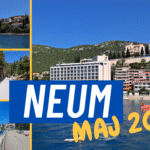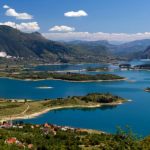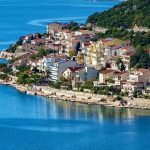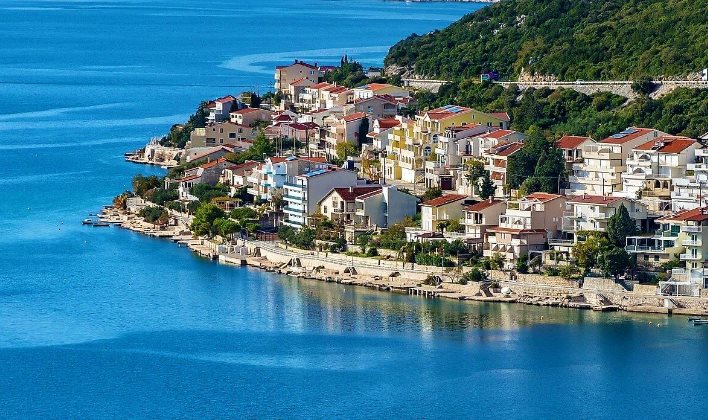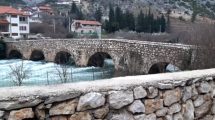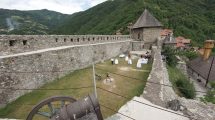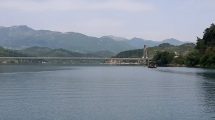Neum is a picturesque tourist town and the sole gateway of Bosnia and Herzegovina to the Adriatic Sea. Nestled in the hilly bay of Neum-Klek, the municipality of Neum covers an area of 226 km² with a population of 5600, while the town itself is home to around 4000 residents.
Neum Riviera stretches for 9 km, but due to the intricacies of the coastline, its length is an enchanting 24 km.
Named after the “old Neum,” situated 2 km inland from the coast, Neum is a relatively new town that emerged on the steep slopes of the bay in the second half of the last century. Its development gained momentum with the construction of the Adriatic Highway in 1965, particularly after the establishment of the municipality in 1978.
Neum position
Geographically, Neum belongs to the Southern Adriatic region, forming a triangle with the tourist hubs of Makarska, Mostar, and Dubrovnik. Shielded from the open waters of the Adriatic by the Pelješac Peninsula, Klek Peninsula, and their beautiful bays, harbors, and charming tourist and fishing villages, Neum is well-connected by the Adriatic Highway.
This road links it to Dubrovnik (66 km) in the south, and to Ploče (35 km), Makarska (80 km), and Split (140 km) in the north. The Neretva Valley, connecting Sarajevo (210 km) via Mostar (75 km) and Ploče, is traversed by an electric railway and the Sarajevo-Opuzen Highway (18 km). Dubrovnik Airport in Ćilipi is 90 km away, Mostar Airport is 70 km away, and Split Airport is 170 km away. Such accessibility provides Neum with excellent tourism opportunities throughout the year.
Climate
Neum enjoys a Mediterranean climate with plenty of sunny days. The sea temperature in July and June can reach up to 27°C, while winters are mild with very rare snowfall. Prevailing winds include the maestral, tramontana (bura), šilok (jugo), and lebić.
History
Neum boasts a rich and complex history, chronicled in numerous books and studies covering its past events, population, and rulers. The earliest mentions of Neum date back to the pre-Slavic era, specifically in the year 533 (NEUMENE).
In more recent history, until 1718, Neum was territorially part of the Republic of Dubrovnik. After a peace agreement in Požarevac, it was handed over to the Ottomans as a corridor-enclave, from Hutovo to the sea, serving as a port for ships and supplying military forces in the hinterland due to political and trade tensions with the Venetians.
Remaining a Turkish enclave until 1876, Neum then became part of the Austro-Hungarian Monarchy until 1918 when it, along with the rest of Bosnia and Herzegovina, joined the Kingdom of Yugoslavia. From then until the beginning of World War II, Neum was part of the Kingdom of Yugoslavia.
After the delineation among the then republics (FNRJ) in 1945, it stayed within the borders of Bosnia and Herzegovina, where it remains today. In the mid-1950s, the first resorts were built along the coast. The Adriatic Highway passed through Neum in 1965, followed by the construction of a campground and the intensive development of workers’ resorts, along with other accompanying tourist facilities such as restaurants and shops. In 1977, the first hotel, “Hotel NEUM,” was built.
In 1978, the municipality of Neum was established as a local government unit, playing a pivotal role in the further tourism, hospitality, and urban development of the city. Subsequent developments included the construction of additional hotels, the city’s overall tourist infrastructure, business and residential buildings, utilities, telecommunications, and all the amenities that make Neum a thriving urban environment with a rich tourism offering today.
Watch the video – the road from Stolac to Neum, the recently completed road that improved the connection between Neum and the mainland of Bosnia and Herzegovina


